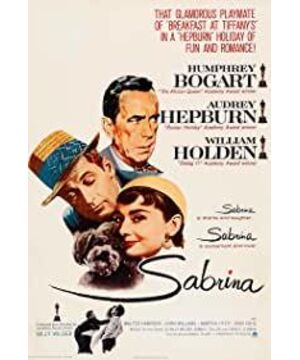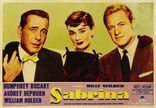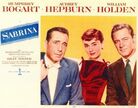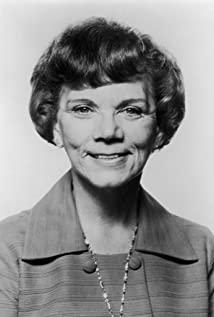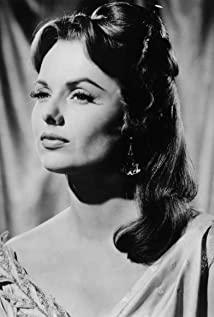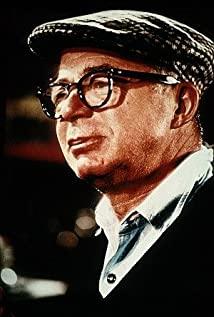Film as a showcase, character as a mannequin: a Givenchy/Hepburn case study examining the interconnections of fashion and film
It is difficult to define fashion, for it often has a fascinating yet perplexing aura . Fashion is “intriguing and compulsive” (Craik, 1993, p1), but also is “arbitrary, transient, cyclical” (Baudrillard, 1998, p101), like Pandora's box, filled with colours, fabrics and adornments, entangled with dress, clothing and style (Edwards, 2011, p1). As a category of discourse, fashion has social, psychological as well as filmic significance.
From the early twentieth century through the present day, film has been used as a vehicle to sell fashion and its connotations: elite ideologies, consumerist habits and lifestyles. Begins from 1910s, fashion film has developed from the primitive non-narrative catwalk show film to the storylines-based feature film (Bruzzi, 1997, p4). Ever since then, more and more haute couture designers started to enter the Hollywood film industry, such as Coco Chanel's design for Palmy Days (1931), which has enriched and also complicated the interconnections between fashion and films (Bruzzi, 2010, p333) and has raised the questions about the differences between costume and haute couture design, and the relation between clothing and narrative in fashion films.
Stars and fashion icons effect is another widespread phenomenon of fashion film emerged during 1930s-50s. From the silent era to classic sound era, films especially Hollywood never stopped creating stars and icons to attract the audience. With the rise of fashion films, stars become more magical and powerful. “With stars, the fashion form shines in all its glory” (Kawamura, 2004, p57). The fashion stars were donning the most fashionable clothing designed by couturiers, and the icons-designers partnerships lead the fashion trend, they tell the audiences what to wear and what to desire. In addition to the significant collaborations between Adrian with Greta Garbo (Bruzzi, 2010, p334), and Grace Kelly's association with Dior's New Look (Andersson, 2012), in 1950s,there was the successful and distinguishing partnership between Paris couturier Hubert de Givenchy and Hollywood fashion icon Audrey Hepburn, which has “changed everything” (Bruzzi, 2010, p334). From the flawless Parisian wardrobe in both Sabrina (1954) and Funny Face (1957 ), to the little black dress (which created a fever of bateau necklines LBDs and even has its own Wikipedia page) in Breakfast at Tiffany's (1961), Givenchy's design for Hepburn in fashion films created a globe fashion trend, which demonstrates that fashion designers and icons has used films as a means to showcase their design and influence the in- and off-screen world.to the little black dress (which created a fever of bateau necklines LBDs and even has its own Wikipedia page) in Breakfast at Tiffany's (1961), Givenchy's design for Hepburn in fashion films created a globe fashion trend, which demonstrates that fashion designers and icons has used films as a means to showcase their design and influence the in- and off-screen world.to the little black dress (which created a fever of bateau necklines LBDs and even has its own Wikipedia page) in Breakfast at Tiffany's (1961), Givenchy's design for Hepburn in fashion films created a globe fashion trend, which demonstrates that fashion designers and icons has used films as a means to showcase their design and influence the in- and off-screen world.
The Givenchy and Hepburn collaborations not only play a distinguishing role in the historical development of fashion film but also have the sociological significance. In The Fashion System and The Language of Fashion, Roland Barthes dissects the semiology of clothing and fashion, he points out not only the linguistic nature of clothing but also social and cultural forms, which has been extended and developed by Baudrillard in The Consumer Society. According to Baudrillard, the logic of consumption is'a manipulation of signs' (p115) and'the finest object' in the consumer package is the body (p130). Baudrillard's assertion can be exemplified by the film works of Givenchy and Hepburn. That is to say, these Givenchy style dresses are, in essence,the commodity signs and the body of Hepburn is used to establish and reinforce the ideologies and values of fashion.
This essay uses Givenchy and Hepburn collaboration as case study, in section one, I anaylse in detail Givenchy and Hepburn collaborations, namely Sabrina, Funny face and Breakfast at Tiffany's, in the context of the historical development of fashion films during 20th century, and raise the following questions: what are the differences between costume and couture design? And what is the relation between clothing and narrative in fashion films? In section two, I explore the relationships between costume and characters, and also the interconnections between fashion stars and female spectators through the examination of Givenchy and Hepburn collaborations. Ultimately this essay will focus specifically on the interaction between fashion and films, to demonstrate that during the course of the 20th century fashion films have become a showcase,with characters (especially female characters) as mannequins, to display adornments, dress and brands and sell to the spectators the most valuable commodity sign: fashion.
Section one: Film as a showcase
Clothing and narrative
The first met between Givenchy and Hepburn is quite interesting. Back in 1953, the twenty-six-year-old Paris couturier Hubert de Givenchy received a phone call that'Miss Hepburn' would come to meet him about costumes for a Hollywood film Sabrina. When Audrey Hepburn showed up in his workshop dressing a knotted T-shirt and wearing flat sandals, Givenchy did not know this Hollywood actress would become his lifelong muse. As he recalls, he was busy preparing his new collection therefore had no time design clothing for her, but Hepburn had'impeccable sense of style' and picked the perfect dresses for herself from his collection (Beyfus, 2015).This romantic encounter between a girl and a Paris wardrobe recalls the fairytale narrative of sartorial transformation in Sabrina as well as Funny Face – both are famous Givenchy and Hepburn collaborations.
There are striking narrative similarities between Sabrina and Funny Face. Firstly, they both depict a Cinderella-esque woman's sartorial transition. Sabrina is about the title character (Audrey Hepburn) starts as a frumpy, plain chauffeur's daughter, after two years sojourn in Paris, transforms into a soignée sophisticate, and similarly, Funny Face is about an'ugly duckling', pedantic bookstore assistant Jo Stockton (Audrey Hepburn) transformed by a fashion magazine into a glamorous, elegant Parisian mannequin. Secondly, in both films, the Cinderella- like characters find their Princess Charming after the sartorial makeover. Lastly, the city Paris, the sacred land of fashion, functions as an important contributor to their sartorial transformation in both two films.
Though some film scholars might argue that the motif of such Cinderella tale is'the potential for upward mobility through work, education and/or marriage' (Moseley, 2002), in Sabrina and Funny Face, the glorious transformation of Sabrina and Jo is achieved not through hardships but rather a whole Paris wardrobe. The evident irony within film narrative in Sabrina is that, the reason why Sabrina goes to Paris is to attend the cooking school, and yet she has no chance to show her cooking skill in the entire film . We can only see her physical transformation and ascent but not have a clue about her improvement of the inner abilities. In other words, her distinguishing quality is not'the self' but the stunning clothing she wears. “What she wears” makes “ what she is".
There is always a main function of film costume: characterization. Jane Gaines (1990, p180) examines, dress can tell characters' stories, especially woman's story. For example, the Hollywood costume designer Edith Head is famous for her “storytelling wardrobes” which is based on the traditional cinema costumer's formula. According to the Hollywood conventional costume design, costume is always seen as a subordinate element of mise-en-scene in the film narrative. Although encourage attention to costume, filmic analyses always associate costumes with mise- en-scene, characters and narrative, but not the dress or clothing per se (Gibson, p36). Costumes, as well as other significant formal elements of mise-en-scene, serve the higher purpose of narrative and characters (Gaines, p181 ). The classic Hollywood cinema sticks to the costume design code,as Alice Evans Field once said, “clothes must be harmonized to be the mood, add subtly to the grace of the wearer, …must enhance the rhythmic flow of the story. Never must they call undue attention to themselves”. That is to say , costume should remains secondary to character and narrative; otherwise it may constitute a threat to the narrative. Similarly, the Hollywood director George Cukor contended that the ideal costume was the one that most “perfectly suited the scene” and if the costume “knocked your eye out", it would “interrupt the scene or even the entire film” (ibid: p195). In a word, in traditional Hollywood costumer's formula, costume should functions as a servant of narrative and character.…Must enhance the rhythmic flow of the story. Never must they call undue attention to themselves”. That is to say, costume should remains secondary to character and narrative; otherwise it may constitute a threat to the narrative. Similarly, the Hollywood director George Cukor contended that the ideal costume was the one that most “perfectly suited the scene” and if the costume “knocked your eye out”, it would “interrupt the scene or even the entire film” (ibid: p195). In a word, in traditional Hollywood costumer's formula, costume should functions as a servant of narrative and character.…Must enhance the rhythmic flow of the story. Never must they call undue attention to themselves”. That is to say, costume should remains secondary to character and narrative; otherwise it may constitute a threat to the narrative. Similarly, the Hollywood director George Cukor contended that the ideal costume was the one that most “perfectly suited the scene” and if the costume “knocked your eye out”, it would “interrupt the scene or even the entire film” (ibid: p195). In a word, in traditional Hollywood costumer's formula, costume should functions as a servant of narrative and character.the Hollywood director George Cukor contended that the ideal costume was the one that most “perfectly suited the scene” and if the costume “knocked your eye out”, it would “interrupt the scene or even the entire film” (ibid: p195). In a word, in traditional Hollywood costumer's formula, costume should functions as a servant of narrative and character.the Hollywood director George Cukor contended that the ideal costume was the one that most “perfectly suited the scene” and if the costume “knocked your eye out”, it would “interrupt the scene or even the entire film” (ibid: p195). In a word, in traditional Hollywood costumer's formula, costume should functions as a servant of narrative and character.
However, in cinema history, costume is not always subordinated to narrative. According to Gaines (p203), costume designers devoted their “wildest visions and most outrageous whims” into clothes design of the melodramas produced by the major studio, during the particular periods, namely the 1920s to the1950s. Due to the distinguishing genre traits of melodrama, the costume can exceed the strict boundaries of period clothes and social class. Additionally, there was also an increasingly complex phenomenon related to traditional costume design in this period. With the development of fashion films, more and more haute couture designers were involved in Hollywood narrative fashion cinema, such as Coco Chanel's design for Palmy Days, and Givenchy's collaboration with Hepburn,which has complicated the interconnections between traditional costume design and haute couture design.
Sabrina, one of Givenchy and Hepburn collaborations, won the Academy Award for best costume design, and Edith Head, the costume designer of this film, took all the credit. There is an issue of authorship of the clothes worn by Hepburn in in this woman's sartorial transition film. While Edith Head was responsible for the pre-transition costume design, couturier Givenchy was given the stunning Parisian wardrobe for Sabrina (Bruzzi, 2004, p6). Unlike Edith Head's traditional “storytelling wardrobes”, Givenchy's haute couture design has a distracting, disruptive potential to film narrative. In the case of Sabrina, there is nothing more surreal than the personal Parisian wardrobes of a chauffeur's daughter. That is to say, traditional costume designers like Edith Head tend to choose a “safer style” to suit the characters and narrative,Whereas couture designer like Givenchy might prioritises costume over the narrative, though it could distract the spectators from the film story. The divergence between Edith Head and Givenchy became a symbol of the differentiation of traditional costume designer and haute couture designer (Bruzzi, 2004, p5 ). Unlike the former, whose clothes designs are “in middle of the road in terms of the current fashion trends” (Head, 1983, p97 quoted from Bruzzi), couturiers are seen as agents of fashion, and make contributions in creating a style and defining the items as fashionable.The divergence between Edith Head and Givenchy became a symbol of the differentiation of traditional costume designer and haute couture designer (Bruzzi, 2004, p5). Unlike the former, whose clothes designs are “in middle of the road in terms of the current fashion trends "(Head, 1983, p97 quoted from Bruzzi), couturiers are seen as agents of fashion, and make contributions in creating a style and defining the items as fashionable.The divergence between Edith Head and Givenchy became a symbol of the differentiation of traditional costume designer and haute couture designer (Bruzzi, 2004, p5). Unlike the former, whose clothes designs are “in middle of the road in terms of the current fashion trends "(Head, 1983, p97 quoted from Bruzzi), couturiers are seen as agents of fashion, and make contributions in creating a style and defining the items as fashionable.
The couturiers label is the most distinguishing feature of Givenchy and Hepburn collaborations, while compares to other'makeover chick flicks' such as Pretty Woman (1990). The haute couture designer label is equivalent to the artist's signature, which can be distinguished from other couture and non-couture design. The studio-designed dresses in Pretty Woman “are homogenized” (ibid: p15). However, in Sabrina, the stunning embroidered organza evening gown is an embodiment of the Givenchy style, the fashion trend and Paris. It shows up in the ball scene, interrupting the film narrative and to solicit an attentive gaze. In case of Funny Face, similarly, Givenchy's flawless haute couture design for Hepburn has the inherently spectacular quality in the rags-to-riches narrative.It does not aim to “suit” the protagonist (who initially is a bookish store assistant) but rather functions as an attraction and a visual spectacle in its own right. Apart from these two films, clothing functions even more independently of narrative and character in Breakfast at Tiffany. The publicity for this film was that “Miss Hepburn is a fashion show herself” (Moseley, 2002, p41). In a word, the couture costume is not longer subservient to film narrative and characters, but plays a more intrusive role in fashion films, pausing the flow of narrative.The publicity for this film was that “Miss Hepburn is a fashion show herself” (Moseley, 2002, p41). In a word, the couture costume is not longer subservient to film narrative and characters, but plays a more intrusive role in fashion films , pausing the flow of narrative.The publicity for this film was that “Miss Hepburn is a fashion show herself” (Moseley, 2002, p41). In a word, the couture costume is not longer subservient to film narrative and characters, but plays a more intrusive role in fashion films , pausing the flow of narrative.
Male gaze and female gaze
Sabrina begins with a ball scene takes place in the Larrabee estate. Sabrina, a British chauffeur's daughter, is hiding outside and longing for the world she does not belong. When David Larrabee, the man she desires for, is going out from the ball to meet a nameless young girl at a secret rendezvous, Sabrina jumps down and attracts his attention. He stops, quickly and simply says, “it's you Sabrina, I thought I heard somebody” and immediately goes away. Sabrina mumbles to herself, “no, it's nobody.” Indeed, to this wealthy libertine, the frumpy, plain chauffeur's daughter is invisible. In contrast, there is the second Larrabee ball scene when Sabrina returns back from Paris smartly dressed the Parisian wardrobe designed by Givenchy. Dressing in the embroidered organza evening gown, Sabrina becomes the centre of attention.And most importantly, she gains the attentive gaze of her Princess Charming. The two contrasting attitude toward Sabrina demonstrate that the sartorial transition is associated with the acquisition of certain kinds of femininity and hence the acquisition of the Prince's gaze. From a pubescent chauffeur's daughter to an adult with femininity, Sabrina's transformation takes place chiefly through a variation of clothes.
The iconic clothes are significant means of the acquisition of femininity as well as the transition of social status. In Sabrina's pre-transformation period, there is a clear social distinction between Sabrina and David Larrabee, which has indicated by the initial scene in which she is upset about David's disregard, but her father talks to her that, “I want you to marry a chauffeur like me”, and “don't reach for the moon”, which demonstrates their social distinction. However, in the latter part of the film, the iconic dress designed by Givenchy has blurred the social distinction between Sabrina and the Larrabees –the upper social groups. In The Language of Fashion, Roland Barthes (2006, p22) points out the social psychology of clothing and asserts that clothing function as a signifier of social distinctions. In the case of Sabrina,the flawless dress (or rather “fashion” per se) provides possibilities for the protagonist to change her social identity and also enhances her social position. From Cinderella to Cinderella with a beautiful dress, her social class has not changed, she is still the chauffeur's daughter, yet she can attend the upper-class ball which she can only stay outside when she was wearing the frumpy clothing or rather “without a beautiful dress”, and she also succeeds in wooing the young master of the prominent Larrabee that used to be "The moon" she can never reach for.yet she can attend the upper-class ball which she can only stay outside when she was wearing the frumpy clothing or rather “without a beautiful dress”, and she also succeeds in wooing the young master of the prominent Larrabee that used to be “the moon" she can never reach for.yet she can attend the upper-class ball which she can only stay outside when she was wearing the frumpy clothing or rather “without a beautiful dress”, and she also succeeds in wooing the young master of the prominent Larrabee that used to be “the moon" she can never reach for.
From invisibility to the acquisition of the Prince's gaze, Sabrina's change of physical appearance raises a question of “looking”. Unlike Laura Mulvey's male gaze theory, Sabrina is not depicted as an erotic object for the male characters to view. Instead, she is represented as a feminine ideal of fashion for female spectators to look at. She is a woman's star, “classy, not sexy” (Moseley, 2002, p48). Moseley (2002, p40) argues that Sabrina as well as Hepburn's other fashion films are , in essence, a complex statement of fashion and beauty, which produces “a gendered attractionist aesthetic” and also provides an intimate space for female spectator. In this space, the film shows the details of clothes and fashionable style to attract female gaze.A striking example is the moment when she arrives at Long Island from Paris that the film reveals her as “the most sophisticated woman at Glen Cove Station”. This is a visual glorification of Sabrina's transformation: the camera details her sophisticated figure, including her elegant pose, the Parisian suit, ornaments. This revealing scene therefore creates a space for female gaze, as Moseley argues, this space allows and encourages the female spectators to read the details of the dress (2002, p42). Another example of female gaze is the opening sequence in Breakfast at Tiffany's. Accompanied by the theme music, this moment portrays Hepburn's elegant image, not necessarily for the gaze of male characters or male spectators, but rather to encourage the female gaze. Especially when the camera captures the cutaway,crescent-shaped details on the back of her dress, as if to invite the female spectators to detail reading the dress and to admire the fashion and style. In a word, the Hepburn and Givenchy collaborations are in essence a discourse of fashion and feminine culture , and they provide a space or rather open up a fashion showcase for female spectators to look at.
City and fashion
Paris is not only the capital city of France but also the undisputed capital of high fashion. As Gertrude Stein wrote in Paris, France (1940), “Paris was where the twentieth century was. It was important too that Paris was where fashions were made” (quoted from Joannou, 2012, p473). This fashion capital of the world is powerfully associated with haute couture, which can be traced back to the nineteenth century (Steele, 1998). Haute couture has enjoyed the status and prestige commensurate with high art (Joannou, 2012) and also signifying the Western sophistication.
Hollywood invents a formula for representing France in the Cinderella makeover films. In both Funny Face and Sabrina, as the sacred land of fashion, Paris functions as an important contributor to the female protagonists' sartorial transformation. In Sabrina, Paris has powerfully associated with fashion and specifically denoting the European sophistication (Moseley, 2002, p40). Similarly, Funny Face also takes place within a Parisian fashion setting. However, unlike Sabrina, this film has an ambivalent attitude to the city. On the one hand, it satirizes the hyper-feminine Parisian'New Look' fashion (Cantu, 2015, p23) especially in the ending sequences when the Quality Magazine fashion show is destroyed by Jo and thus in a complete mess. The film also mocks the other cultural aspect of Paris –Existentialist philosophy,which spoofed as “Empathicalism” in film (Cantu, 2015). On the other hand, Funny Face worships the Parisian style as well as the haute couture fashion, and admires the cultural landscape of Paris. A musical number performed by Jo (Hepburn) , the fashion photographer Dick Avery (Fred Astaire), and the editor of a leading fashion magazine Maggie Prescott (Kay Thompson) shows their respective desire and admiration of Paris.
Section two: character as a mannequin
Clothing and body
In addition to the interactions between clothing and narrative, Hepburn and Givenchy collaboration also raises a question about the relation between clothing and body. In The Body and Society, Turner (1985, p1) notes that human beings “have bodies and they are bodies” . Entwistle (2000, p323) adds a prominent point to the relation between bodies and dresses that “human bodies are dressed bodies”. Indeed, body and clothing are constantly and intimately connected: while the body gives life to the clothing, the clothing works on the body with social identity and meanings (Twigg, 2013, p6). Barthes prioritises human body over the clothing, in his words, “It is not possible to conceive a garment without the body… the empty garment, without head and without limbs (a schizophrenic fantasy), is death” (1973, p107 quoted from Bruzzi, 2004, p31).However, fashion has complicated and enriched the relation between clothing and body. In The Consumer Society, Jean Baudrillard (1998, p196) asserts the finest object in the consumer society is the body:
its omnipresence (specifically the omnipresence of the female body, a fact we shall have to try to explain) in advertising, fashion and mass culture; the hygienic, dietetic, therapeutic cult which surrounds it, the obsession with youth, elegance, virility/femininity , treatments and regimes, and the sacrificial practices attaching to it all bear witness to the fact that the body has today become an object of salvation. It has literally taken over that moral and ideological function from the soul.
(Baudrillard 1998, p196)
As Bruzzi (2004, p30) has argues, the interconnection and interaction between clothes and body are essential to fashion. Hepburn's sartorial transition films, for example, do not prioritise body over clothes but rather emphasise the value of themselves. In these Cinderella fantasies , Sabrina, Funny Face as well as Breakfast at Tiffany's, Hepburn's slim body suggests the mannequin in department stores, which is perfect for looking at and consuming. In the case of Sabrina, the protagonist remains invisible when she was wearing the plain, regular clothes but only after she has dressed the couture costume can she receive the male characters' looking-at-ness. Likewise, Jo's body remains “absent” when she was wearing the bookish outfits, she is noticed only because her “funny face”. That is to say, only after donning the clothing,Sabrina and Jo acquire femininity as well as the male and female gaze. In other words, the clothing makes their bodies alive. More specifically, In Funny Face, Jo is modeling the special collection designed for her in Paris, and the fashion magazine photographer captures her in freeze frames, pausing the flow of narrative and making these moments purely iconic. This display has clearly engaged the spectators' attention in the dresses and Paris attractions, but not in Hepburn's body. The body of Hepburn is rather used as a mannequin to display the dress and thus establishes and reinforces the ideologies and values of fashion.and the fashion magazine photographer captures her in freeze frames, pausing the flow of narrative and making these moments purely iconic. This display has clearly engaged the spectators' attention in the dresses and Paris attractions, but not in Hepburn's body. The body of Hepburn is rather used as a mannequin to display the dress and thus establishes and reinforces the ideologies and values of fashion.and the fashion magazine photographer captures her in freeze frames, pausing the flow of narrative and making these moments purely iconic. This display has clearly engaged the spectators' attention in the dresses and Paris attractions, but not in Hepburn's body. The body of Hepburn is rather used as a mannequin to display the dress and thus establishes and reinforces the ideologies and values of fashion.
Stars and self image
As is stated above, with the rise of fashion films, the icons-designers partnership becomes more magical and powerful. As fashion agents, stars and fashion designers lead the fashion trend, and tell the audiences what to wear and what to desire. They not only play a significant role in fashion film history but also influence the on- and off-screen world. Before the discussion, let us first take a look at the above-mentioned story about Hepburn's first met with Givenchy, that she knew exactly what she want and picked the perfect dresses for herself from a whole new Paris wardrobe. This story can be read as a symbol of the establishment of Hepburn's iconic fashion figure. Ernest Lehman, the screenwriter of Sabrina, has pointed out the significance of the “Sabrina's look”:
The way Audrey looked in Sabrina had an effect on the roles she later played. It's fair to say that if she had never gone to Paris she wouldn't have had that role in Breakfast at Tiffany's. The Sabrina clothes fixed her image forever.
( quoted from Collins, 1995)
The close association between fashion designer and star not only has defined the sartorial image of Sabrina, Jo or Holly Golightly in fashion cinemas, but more importantly, it blurs the distinction between fairytale narrative of transformation and reality per se and thus establishes Audrey Hepburn's on- and off-screen persona.
Both in the big screen and the reality life, Hepburn is established as the embodiment of fashion, and thus becomes a perfect figure to be commodified. The most appealing part of this'Hepburn met Givenchy' story to the reader (especially the female) is “She got the clothes right”. As is stated above in section one, fashion is powerfully associated with the attainment of feminine ideals and spectatorial gaze, that is to say, once you got your clothing right you establish your femininity and build your image. The on- and off-screen image of Hepburn strongly affects the female spectators. According to Moseley's audience studies on Hepburn's ongoing appeal for young British women from the 1950s to the l990s (2002, p48), a female interviewee remembers specially the Hepburn's style in My Fair Lady and expresses an admiration of her gloves,bags and shoes displayed in the film. In Stardom and Celebrity, Stacey (2007, p315) examines that the female spectators are closely connected with Hollywood film stars in 1940s and 1950s through the commodity consumption:
Female spectators remember Hollywood stars through their connection with particular commodities and the ways in which they were worn or displayed. Typically, this association is made in relation to clothes, hairstyle, make-up and cosmetics, and other fashion accessories. It is the commodities associated with physical attractiveness and appearance that are especially remembered in connection with female stars.
(Stacey 2007, p317)
Therefore, designers and stars function as diffusion agents of the fashion and showcase their commodity images and design labels and brands through fashion films. The musical number “Think Pink” in Funny Face offers a striking example of the fashion diffusion. Maggie, the fashion Godmother of a leading fashion magazine, announces “pink” has become the new fashion gospel. The “think pink” slogan pushes pink as a woman's colour and thus convinces the female spectators to embrace their femininity. As Maggie sings, “I wouldn't presume to tell a woman what a woman ought to think, but tell her if she's gotta think, think pink”, the fashion magazine functions as persuasive agent to tell female readers (also consumers) what to think and what to purchase. Additionally, the protagonist Jo, who is initially an anti-fashion “empathicalist”,then turns into a fashion model by the magazine, and “finally becoming fully commodified” (Cantu, 2015, p25), which implicitly demonstrates the power and the danger of fashion agents' manipulation of female consumers.
Like this satiric musical marketing slogan, fashion also uses films as a means to implicitly sell its connotations to the spectators (largely female): fashion can transform you into a new self with social status and prestige; and after become the one you desire to be , you can find your own princess charming. The consumption of fashion raises another question about the subjectivity of the female spectator. In The Consumer Society, by examining stars or rather the'heroes of consumption' and ourselves (consumers) in detail, Jean Baudrillard asserts that stars mimicry is in essence self-copying:
the celebrity is usually nothing greater than a more publicized version of us. In imitating him, in trying to dress like him, talk like him, look like him, think like him, we are simply imitating ourselves... We look for models, and we see our own image.
(Baudrillard 1998, p196)
Following this line of discussion, it can be argued that female spectators are in a paradoxical position: they are both the objects and subjects of commodity. As Doane asserts that
the cinematic image for the woman is both shop window and mirror, the one simply a means of access to the other. The mirror/ window, then, takes on the aspect of the trap whereby her subjectivity becomes synonymous with her objectification.
(Doane, 1989, p31)
That is to say, in the process of consuming the commodities (fashion icons and stars), the female spectator prepares to be “consumed” herself. According to Stacey (2007, p314), the female spectator play the combining role of a spectator as well a consumer; they tend to the fashion image in the big screen and consume the stars and ultimately produce the self as an object of the male gaze.
Conclusion
To conclude, from the early catwalk show to narrative-based, fashion film has been use as a vehicle to showcase the fashion and consumer imagery. By using the Givenchy and Hepburn collaborations as a case study, this essay explore the differences between traditional costume design and haute couture design and also examines the relation between narrative and clothes in fashion cinemas. The essay also examines the importance of the Givenchy and Hepburn collaborations within the historical development of fashion films and argues that Givenchy's designs for Hepburn not only play a distinguishing role in filmic history but also have the sociological significance. By establishing Hepburn's on- and off- screen images, they have influenced the female spectators.
To examine how has film been used as a showcase for fashion and consumer imagery, I conduct a detailed analysis research method of the Givenchy and Hepburn case study, and bring together materials and scholarship including fashion theories and consumption studies. The text-focused method is useful with regard to the limited investigation of Givenchy and Hepburn collaborations, however, if future research will be undertaken I would seek to use a broader range of approach such as audience studies. It is worth exploring how the audiences (especially female) view and interpret the fashion films in their own ways in relation to their own social and political agendas.
References
Andersson, T., 2012. Fashioning the fashion princess: Mediation transformation stardom, Journal of AESTHETICS & CULTURE, Vol. 4
Baudrillard, J., 1998. The Consumer Society: Myths and Structures, London: Sage
Beyfus, D., 2015. Hubert de Givenchy: My relationship with Audrey Hepburn was'a kind of marriage' [online] available at: http:/ /www.telegraph.co.uk/culture/film/11731823/Hubert-de-Givenchy-My-relationship-with-Audrey-Hepburn-was-a-kind-of-marriage.html
Bruzzi, S., 2004. Undressing Cinema: Clothing and Identity in the Movies. London and New York: Routledge
Cantu, M., 2015.'Clothes make an awful difference in a girl': Mlle. Modiste, Irene and Funny Face as Cinderella fashion musicals, Studies in Musical Theatre , 9(1)
Craik, J., 1993. The Face of Fashion, Cultural Studies in Fashion. London and New York: Routledge.
Collins, AF, 1995. When Hubert Met Audrey. [online] available at:http://www.vanityfair.com/style/2014/02/audrey-hepburn-givenchy-style
Edwards, T., 2011. Fashion in Focus: Concepts, Practices and Politics. London and New York: Routledge.
Entwistle, J ., 2000. Fashion and the Fleshy Body: Dress as Embodied Practice, Fashion Theory, 4(3), 323-347
Gaines, J., 1990. Costume and Narrative: How Dress Tells Woman's Story, London: Routledge.
Gibson, PC , 1998. Film costume.
Joannou, M., 2012.'All right, I'll do anything for good clothes': Jean Rhys and Fashion, Women: A Cultural Review, 23(4), 463-489.
Kawamura, Y ., 2004. Fashion-ology: an introduction to fashion studies. Berg.
Moseley, R., 2002. Growing up with Audrey Hepburn. Manchester: Manchester University Press.
Moseley. R., 2002. Trousers and Tiaras: Audrey Hepburn, a Woman's Star, Feminist Review, 71, 37-51. Published by: Palgrave Macmillan Journals.
Mulvey, L., 1989. Visual pleasure and narrative cinema. Palgrave Macmillan UK .
Stacey, J., 2007. With Stars in Their Eyes: Female Spectators and the Paradoxes of Consumption, in: Stardom and Celebrity: A Reader, ed. Sean Redmond, Su Holmes
Roland, B., 2006. The Language of Fashion. Oxford: Berg.
Smith, DM, 2002. Global Cinderella: Sabrina (1954), Hollywood, and Postwar Internationalism, Cinema Journal, 41(4), 27-51. Published by University of Texas Press.
Twigg, J., 2013. Fashion and Age: Dress, the Body and Later Life. London: Bloomsbury Academic
Valerie, S., 1998. Paris Fashion: A Cultural History. 2nd ed. Oxford: Berg. [online] available at: http://fashion-history.lovetoknow.com/clothing-around-world/paris-fashion
Valerie, S., 2010. The Berg Companion to Fashion. Oxford: Berg Publishers.
View more about Sabrina reviews


